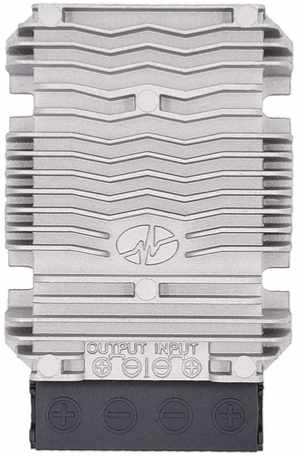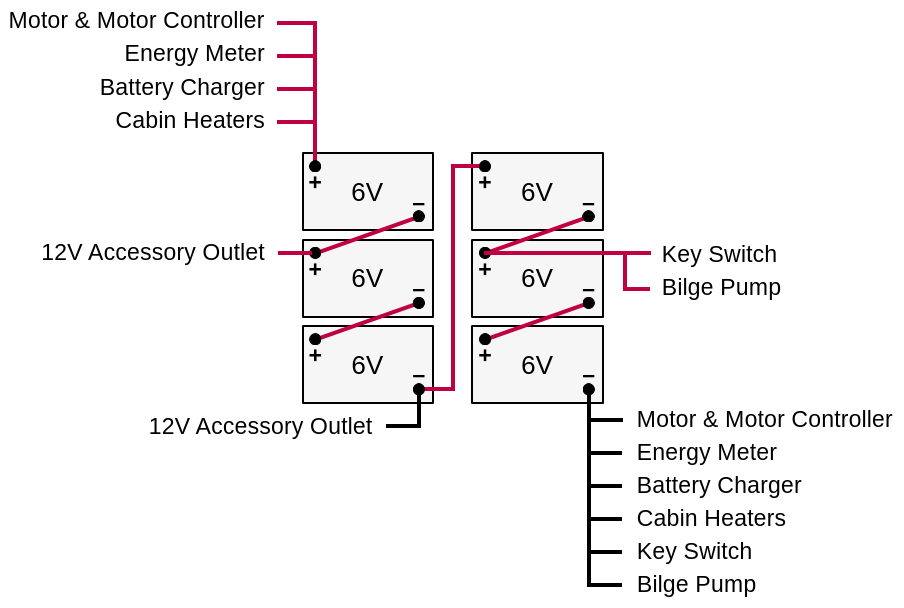Upgrades
DC to DC Buck Converter
A DC to DC Buck converter converts a 36V/48V input into a 12V output that can power all of your 12V systems. This solves the problem of unequal loading across the battery bank, centralizes 12V supply circuits for easier troubleshooting, and helps to isolate your 12V systems from voltage spikes and higher voltages introduced when charging batteries.

Battery Taps
The following diagram shows where our boat had battery connections to feed various circuits.

12V Loads
The maximum 12V load in our boat is 33A, though the realistic load is a lot lower.
| 12V Device | Amps |
|---|---|
| 12V Accessory Outlet | 8.0 |
| Radio | 7.0 |
| Motor Vent Blower | 4.5 |
| Horn | 3.0 |
| Bilge Pump | 2.5 |
| Interior Lights | 2.4 |
| Motor Contactor Coils | 2.2 |
| (2) Heater Contactors | 0.9 |
| Nav Light - Bow | 0.8 |
| Nav Light - Stern | 0.7 |
| Motor Controller | 0.5 |
| Heater Fans | 0.2 |
| Battery Charger Disconnect Contactor | 0.1 |
| Total | 33.0 |
DC-DC Converter Selection
We use a Szwengao DC-DC non-isolated converter model WG-48S13R860M rated for a 30-60VDC input and 13.8VDC output at 60A. Over-sizing the converter is an inexpensive way to add reliability.
A non-isolated converter (the cheapest and most common type) shares a common ground between input and output, allowing 36V/48V and 12V circuits to use the same ground. The grounds are not separated between these circuits on the Duffy.
A 13.8V output matches the output of a new "12V" battery output and allows for a power drop to your 12V loads.
The rated input voltage should be higher than your battery voltage since your battery charger outputs a higher voltage in order to force a charge.
Implementation
Our boat had three 12V taps on two different battery pairs feeding the key switch, the bilge pump, and the 12V accessory outlet on the main panel.
Consider adding a small ST Blade fuse block,
such as the Blue Sea 5025  to better organize your circuit
protection devices.
to better organize your circuit
protection devices.

